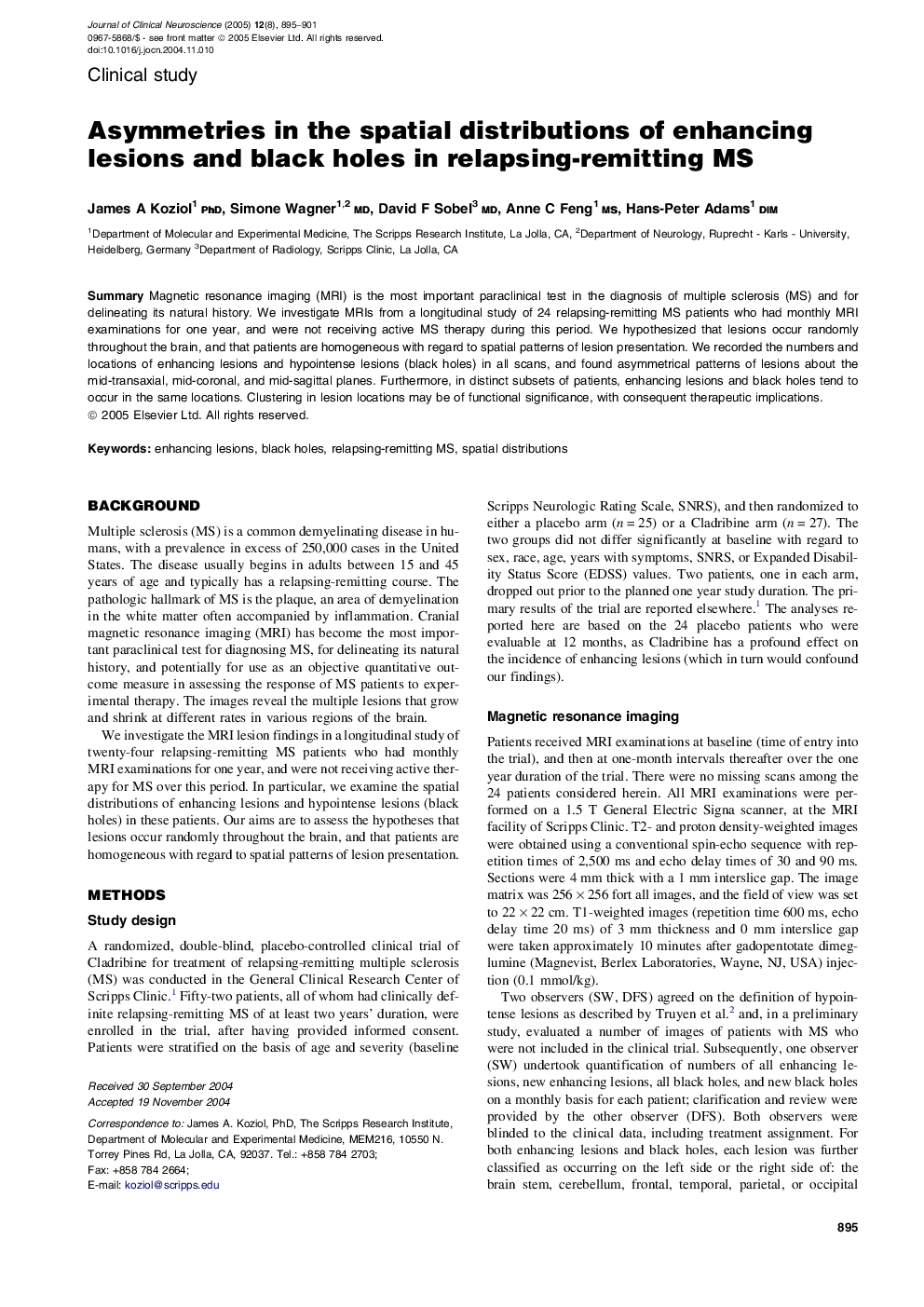| Article ID | Journal | Published Year | Pages | File Type |
|---|---|---|---|---|
| 9193885 | Journal of Clinical Neuroscience | 2005 | 7 Pages |
Abstract
Magnetic resonance imaging (MRI) is the most important paraclinical test in the diagnosis of multiple sclerosis (MS) and for delineating its natural history. We investigate MRIs from a longitudinal study of 24 relapsing-remitting MS patients who had monthly MRI examinations for one year, and were not receiving active MS therapy during this period. We hypothesized that lesions occur randomly throughout the brain, and that patients are homogeneous with regard to spatial patterns of lesion presentation. We recorded the numbers and locations of enhancing lesions and hypointense lesions (black holes) in all scans, and found asymmetrical patterns of lesions about the mid-transaxial, mid-coronal, and mid-sagittal planes. Furthermore, in distinct subsets of patients, enhancing lesions and black holes tend to occur in the same locations. Clustering in lesion locations may be of functional significance, with consequent therapeutic implications.
Related Topics
Life Sciences
Neuroscience
Neurology
Authors
James A. PhD, Simone MD, David F. MD, Anne C. MS, Hans-Peter DIM,
